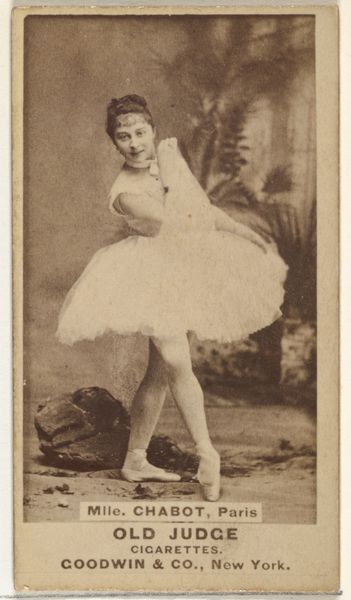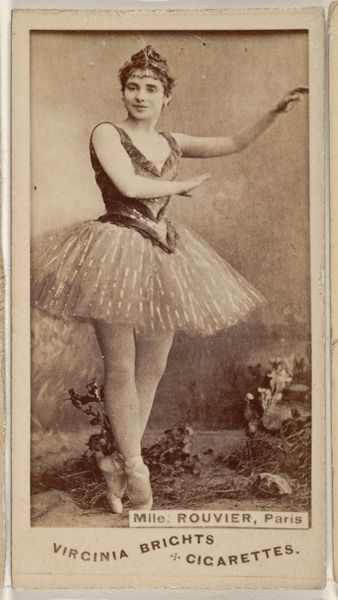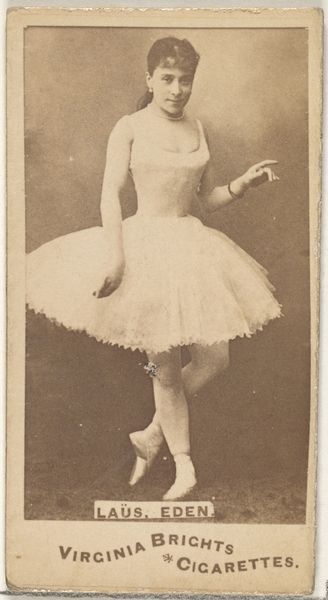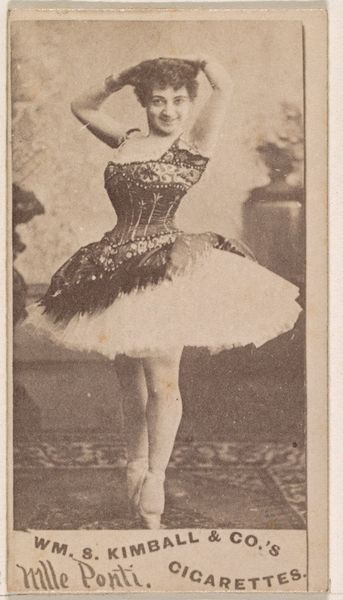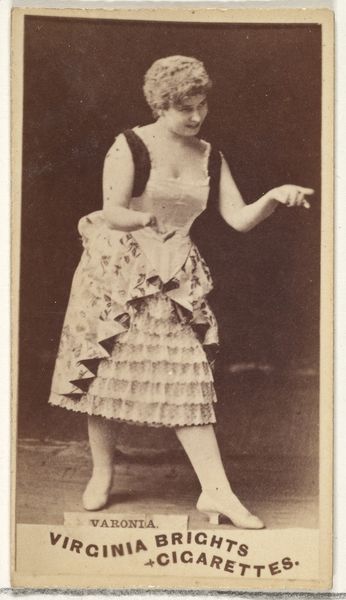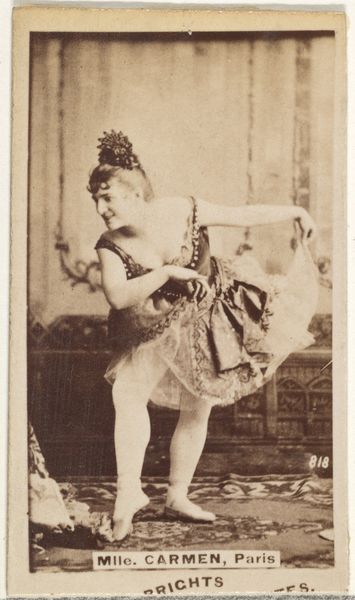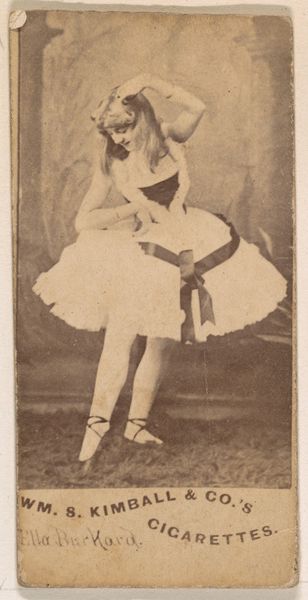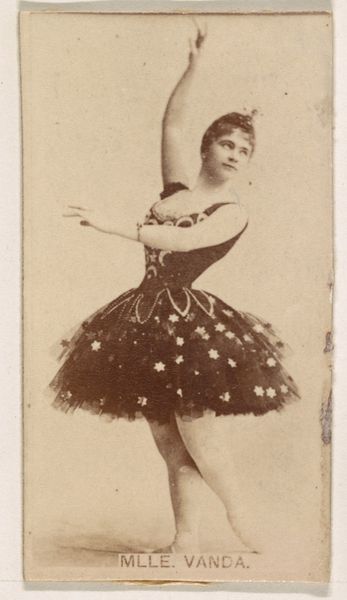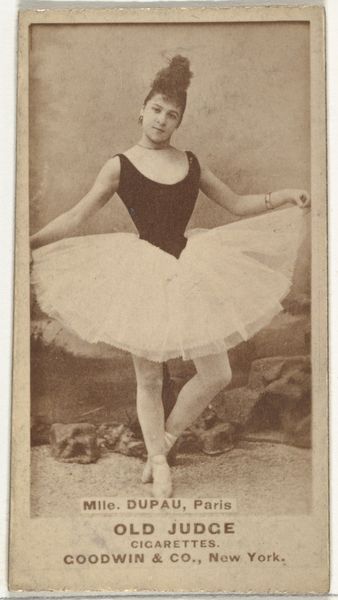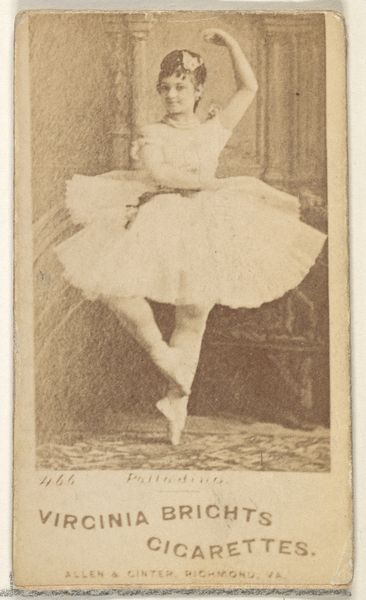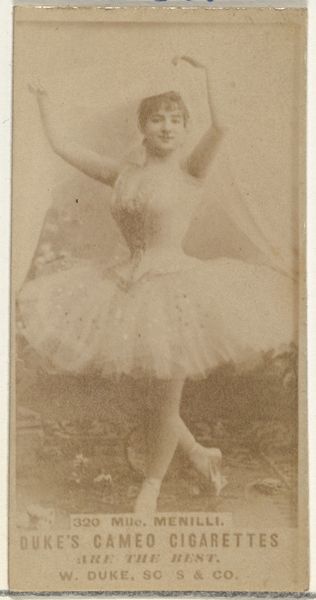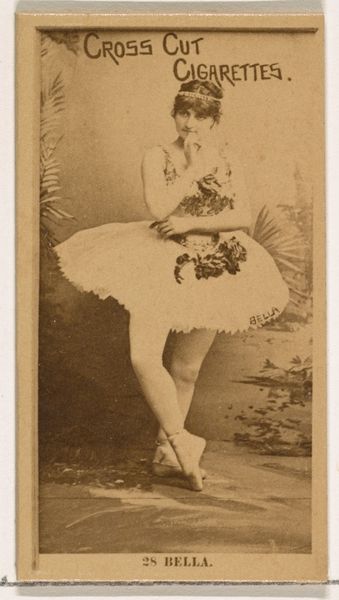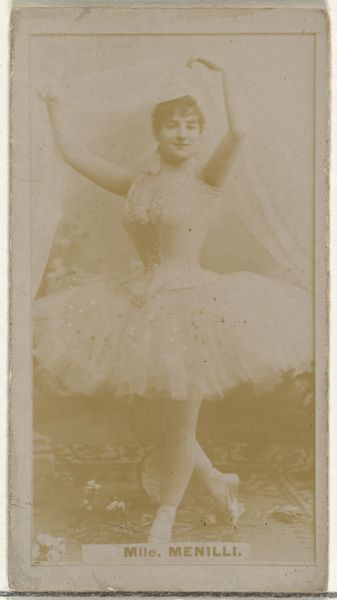
Card 771, Mlle. Chabot, Paris, from the Actors and Actresses series (N45, Type 1) for Virginia Brights Cigarettes 1885 - 1891
0:00
0:00
drawing, print, photography
#
portrait
#
drawing
# print
#
impressionism
#
photography
#
19th century
#
genre-painting
Dimensions: Sheet: 2 3/4 x 1 3/8 in. (7 x 3.5 cm)
Copyright: Public Domain
Curator: This captivating piece is "Card 771, Mlle. Chabot, Paris," a trade card from the Actors and Actresses series created by Allen & Ginter for Virginia Brights Cigarettes between 1885 and 1891. Editor: There's something inherently fragile about this image. The delicate tones and pose, it's all so meticulously composed and, obviously, highly constructed. Curator: Precisely. What interests me is the convergence of celebrity, consumption, and artistic production here. This is a mass-produced item intended to promote a product—cigarettes—but it employs the visual language of fine art portraiture. The lithographic process, the paper stock, even the act of collecting these cards—all speaks to Victorian era commercial strategies and burgeoning consumer culture. Editor: And it also speaks to the commodification of the female performer. Mlle. Chabot isn't just a dancer; she is also being sold to the public as a spectacle, packaged along with a brand. Consider how her image intersects with late 19th century gender expectations and the emerging "celebrity" persona. We must also ask: what power dynamics were at play for this young woman? Curator: Absolutely. Her perceived exoticism as a performer and its link to both social access and commercialization makes it all the more layered. How different the materiality of these trade cards were from paintings or prints of this era—these were ephemeral objects, easily discarded, handled and circulated very differently. And yet, we see in this portrait a desire for enduring documentation, echoing conventions of artistic fame, captured through accessible technologies like photography and commercial printing. Editor: And consider, too, how the relatively recent invention and mass production of photography reshaped ideas around identity and representation. Was this kind of accessible image production ultimately liberating or did it further bind women like Mlle. Chabot within societal constructs? Curator: This particular trade card challenges a lot of common assumptions of late 19th century values around fine art and craft production in general, through exploring what makes an image or commodity valuable or collectable, as they circulate widely in Victorian society. Editor: Thinking about the context enriches the viewing experience. Mlle. Chabot transcends the constraints of portraiture, reminding us to investigate issues of gender, class, and visibility. Curator: Exactly. And how commercial material is tied into how individuals shape themselves during the time. Editor: Food for thought, indeed.
Comments
No comments
Be the first to comment and join the conversation on the ultimate creative platform.
